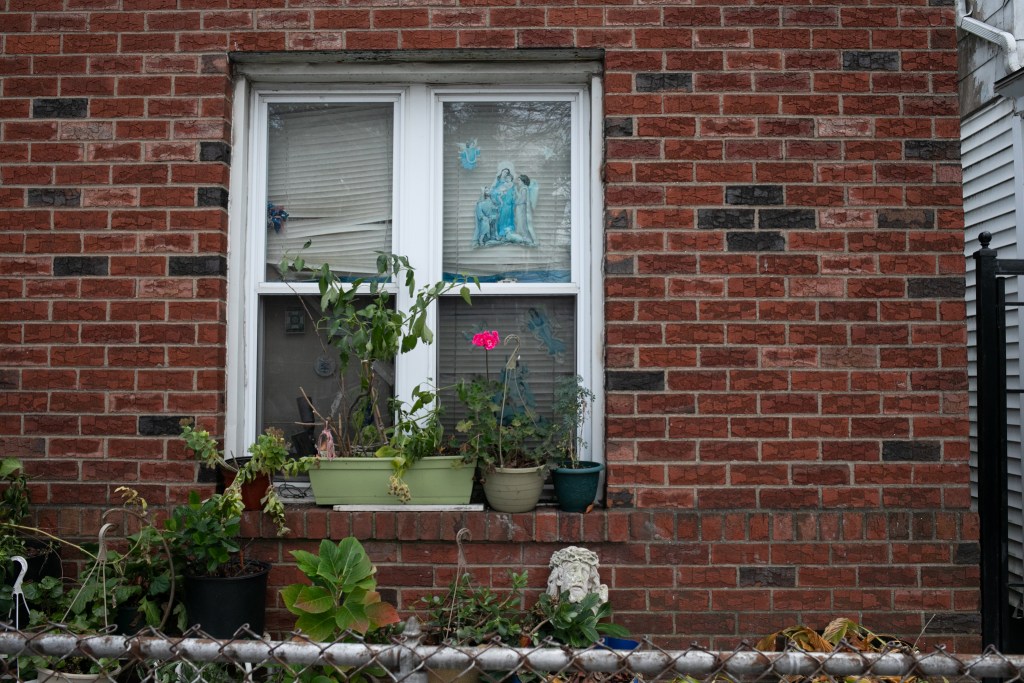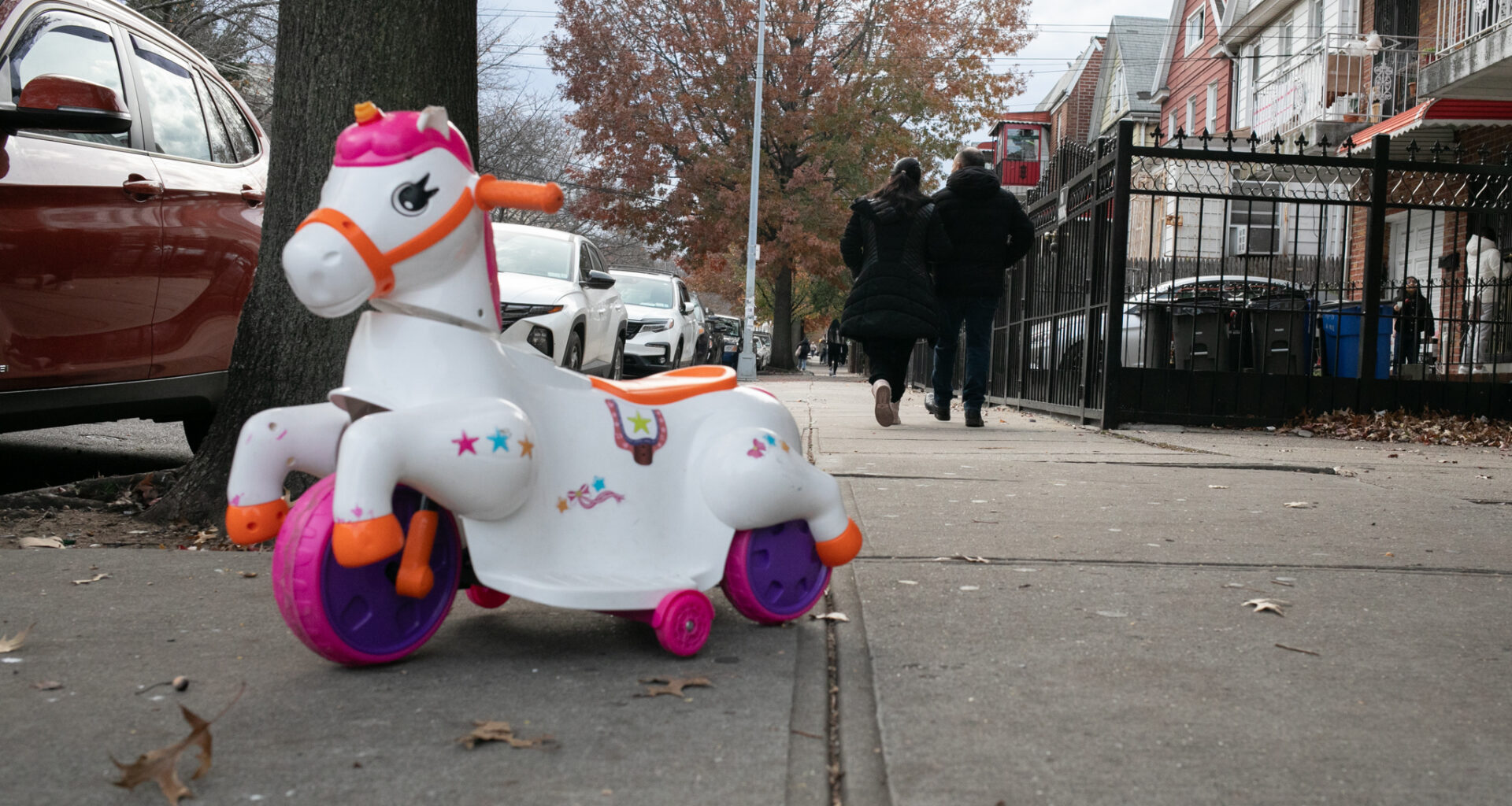A 28-year-old Queens construction worker was headed to work one morning in early November when a man came up to him dressed in a blue vest that said “POLICE” on it.
The Central American man, whose name THE CITY is withholding, said he wanted to help, concerned the officer was investigating a crime in his neighborhood, Corona. The officer showed him a picture and asked if he’d seen the man in it, but when he said he hadn’t, the questions quickly shifted to his own identity and legal status in the United States.
Moments later, the construction worker found himself surrounded by several other officers, who handcuffed him and drove him away. He spent two weeks in Immigration and Customs Enforcement detention in New Jersey before a federal judge ordered his release.
“I considered myself a strong person, a resilient person, but I’ve never gone through something like this,” the man told THE CITY in Spanish. “Leave your family out of nowhere, the uncertainty of what’s going to happen to you. I was in shock.”
Seemingly random street arrests of immigrants by federal authorities, previously nearly unheard of in New York, are now a common occurrence, according to legal filings reviewed by THE CITY, and local activists and advocates who’ve been documenting the trend in federal lawsuits and on social media.
Attorneys Harold Solis and Paige Austin, who work for the immigrant advocacy group Make the Road New York have described the recent arrests as “a coordinated campaign of race-based stops in largely Hispanic and immigrant neighborhoods in New York City,” in one legal filing reviewed by THE CITY, describing the Nov. 18 arrest of a longtime Bushwick resident who ICE agents stopped, questioned and arrested at a bus stop near his home.
While such stops and arrests have been widely documented for months in Los Angeles, Chicago and other cities, immigration enforcement in New York City during the first several months of President Donald Trump’s second term was focused primarily inside immigration courts and at ICE offices, targeting immigrants who had appeared voluntarily for hearings in their deportation cases or check-ins with the agency.
But the winds shifted in early September, when Supreme Court Judge Brett Kavanaugh published a concurring opinion that found ICE agents have authority to stop and question people they suspect of being undocumented based on their appearance or the language they speak. Civil rights advocates have chided the ruling as a green light to racially profile, dubbing such encounters “Kavanaugh Stops.”
Data on the arrests remains scant. ICE hasn’t released updated arrest data since late July, and typically does not identify location beyond 26 Federal Plaza, which serves as a centralized booking office for ICE arrests in the New York City area. A spokesperson for the Department of Homeland Security hasn’t responded to a request for comment.
Advocates and activists have been tracking the New York street arrests, rushing to the scene when agents are spotted. They are documenting and filming incidents and racing to file habeas corpus writs in federal court, which can help prevent a person from being swiftly transferred to a far-off detention center in a region where courts are less favorable to immigrants. Local activists have launched a citywide hotline to report ICE activity and have passed out whistles by the thousands so New Yorkers will alert those within earshot if they see agents.
Meanwhile, legal advocates observing immigration courts in New York City say they haven’t witnessed an arrest inside the facilities in weeks, even though masked agents still patrol the floors regularly.
 Community members say they’ve seen increased immigration enforcement around 111th Street and 41st Avenue in Corona, Queens, Nov. 18, 2025. Credit: Ben Fractenberg/THE CITY
Community members say they’ve seen increased immigration enforcement around 111th Street and 41st Avenue in Corona, Queens, Nov. 18, 2025. Credit: Ben Fractenberg/THE CITY
At Make the Road New York, Austin represents a number of people arrested randomly in recent weeks.
“They often are showing a photo and that’s how they’re getting people to stop and engage with them,” Austin said of the federal agents who pounce. Austin said it wasn’t clear if agents are actually looking for the pictured person, or if they’re using a photo as a ruse.
“They’re just claiming to be looking for a person to get, people to stop and engage with them, and we absolutely think that it’s race-based.”
Austin’s account parallels one described in a federal court filing by attorney Heather Axford of the group Central American Legal Assistance, regarding the arrest of her client, a Guatemalan man who was detained by agents near his home in Jamaica, Queens, on Nov. 16.
“They showed him a picture of a man he did not know. Then they asked [him] questions about himself and his status, which he honestly answered,” Axford wrote.
‘Recurring Visits’
Natalia Aristizabal, deputy director of Make the Road New York, said her group has tracked federal agents repeatedly returning to the same location, making multiple arrests sometimes over the span of hours, or days.
“When they go to a house or they go to an intersection, they go back to the house and that intersection, so recurring visits,” she said. “That’s been the pattern.”
Activists have tracked sightings and arrests by masked federal agents in heavily immigrant neighborhoods including Bensonhurst, Sunset Park and Bushwick in Brooklyn, Corona, and Manhattan’s Washington Heights over the past month.
Last week City Councilmember Susan Zhuang (D-Brooklyn) confirmed one such arrest of a young mother of an 8-month-old baby outside her home, amNewYork reported. “If ICE only detained violent criminals, that’s one story, but now they are randomly snatching people from the streets. This is outrageous,” said Zhuang, a conservative Democrat who often sides with Republicans on public safety and other issues.
A month after its first arrest sweep there, over the weekend before Thanksgiving ICE agents returned to a street vendors’ zone on Canal Street in Manhattan’s Chinatown, arresting one person, the Daily News reported. ICE called that arrest a “targeted operation” and said that the individual had prior NYPD arrests related to selling counterfeit goods.
While the Oct. 21 military-style raid on Canal Street was carried out by dozens of masked federal agents in tactical gear who combed the block, triggering a spontaneous protest from witnesses, the arrests since have involved small groups of agents who make one or two arrests swiftly, then leave the block.
 Community members say they’ve seen increased immigration enforcement around 111th Street and 41st Avenue in Corona, Queens, Nov. 18, 2025. Credit: Ben Fractenberg/THE CITY
Community members say they’ve seen increased immigration enforcement around 111th Street and 41st Avenue in Corona, Queens, Nov. 18, 2025. Credit: Ben Fractenberg/THE CITY
In one spate of arrests in Corona, near the intersection of 97th Street and 41st Avenue on Nov. 1, local activists with the group Queens Neighborhoods United documented agents arresting seven people over the course of the afternoon.
Agents arrested a blind man and took him to 26 Federal Plaza. They later called his son saying they would release his father if he surrendered to them, and when the son arrived, they arrested him as well, according to legal filings reviewed by THE CITY. ICE detained both men for several days, transferring the father to a jail in Orange County and son to Delaney Hall in Newark, before releasing the father, the New York Times reported. His son is still in custody.
In some cases federal judges have been sympathetic and ordered detainees’ immediate release. In the case of an El Salvadorean man arrested while walking his sister’s dog in The Bronx on Nov. 14, a judge ordered his release a week later.
But advocates fear many more people are not able to get connected to legal services fast enough.
Edison, a 31-year-old construction worker who lived in Corona with extended family, was arrested by ICE on the morning of Nov. 4 while briefly stepping out to get a coffee.
His relatives had no idea where he went for hours until later that afternoon he sent a message of an immigration document from 26 Federal Plaza. He was quickly shipped to Delaney Hall in New Jersey, to a detention site in Missouri and then to Texas, where he was being held as of Tuesday night, ICE records show.
“We’re destroyed. We have no idea what to do,” said his aunt Yolanda, 58, a U.S. citizen from Ecuador who spoke in Spanish and asked that her last name not be published.
“I understand if there needs to be control because there’s a lot of crimes. But this is a disaster, they’re destroying families,” she said.
Yolanda said she’s warning friends and neighbors to be on guard.
“If you don’t have to go out, don’t go out. If there’s a party, better you don’t go. Take care of yourself until this passes,” she said, adding, “this is chaos.”
Related
